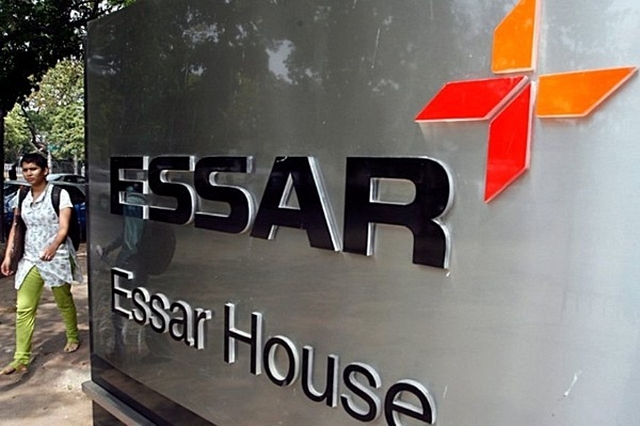
ArcelorMittal Taking Over Essar Steel: How Due Diligence By Courts Brought About The Biggest Resolution Under IBC Yet
In one of the most powerful economic reforms undertaken by the Narendra Modi government, NCLT approves takeover of Essar Steel by ArcelorMittal — the biggest resolution plan under the Indian Bankruptcy Code.
India’s biggest ever resolution plan under the two-year-old Indian Bankruptcy Code (IBC) has just come through this weekend. The Ahmedabad bench of the National Company Law Tribunal (NCLT) has approved the bid by European steel giant, ArcelorMittal, to take over the Ruia group’s flagship company Essar Steel for Rs 42,000 crore.
Clearly, there is a lot of steel involved in Essar Steel case, but as I expect to show later, the steel belongs to the nerves held steady by the Indian judiciary.
Until the end of December, financial creditors (mostly banks) have realised Rs 65,795 crore from 79 resolution plans. These companies, to put it simply, have been sold to new promoters. The Essar Steel case will take the sum past the Rs 1 lakh crore mark.
It is a massive jump by any standard and brings closure to the first set of 12 cases the Reserve Bank of India (RBI) sent to be sorted out under the IBC. The RBI had sent the list in June 2017. Others on the list besides Essar Steel, were Bhushan Steel, Bhushan Power & Steel, Jaypee Infratech, Lanco Infratech, Monnet Ispat & Energy, Jyoti Structures, Electrosteel Steels, Amtek Auto, Era Infra Engineering, Alok Industries and ABG Shipyard.
Some of them have got resolved, but being the largest of the lot by a wide margin, the Essar Steel case drew the most attention. The Ruias have waged a massive battle since RBI sent the list to keep the company with them. They initially challenged the locus standi of the NCLT and the validity of IBC as a law. Once they lost those batch of appeals, the battle went on about who should be allowed as bidders.
The corporate battle in the court for the past two years is fascinating, more so given their strong impact on the Indian economy. The Indian steel sector is expected to log in a long spell of growth through this decade and the next as the infrastructure needs of the economy expands. Those prospects should have kept Essar Steel solvent and also drawn in investments from abroad. But that did not happen.
Using the balance sheet of Essar Steel, the Ruias over the past two decades borrowed massively from banks. Little of it went to expand capacity of Essar Steel. Those loans turned toxic when the banks led by State Bank of India refused to give out more loans to pay for old dues. Instead, they demanded their money back to reduce their pile of bad loans.
Foreign investment, meanwhile, could not make a foray into India as no government was able to give out new iron ore mines or offer land to build new steel plant. The entire saga upended a simple belief held dear in developed economies, that purloining of capital deserves as big a punishment as any other crime. It has been often missed in India. The IBC regime has begun to bring that belief back into practice. It has un-disputably been one of the most powerful economic reforms undertaken by the Narendra Modi government.
The award in the Essar Steel case could allow ArcelorMittal to enter India to expand India’s demand for steel. It would also fill up a big hole in the balance sheets of Indian banks. The loser will be the Ruias, of course. Don't expect them to still give up. As soon as the NCLT order was issued the Essar Group and Standard Chartered requested for a suspension of the implementation of the order so they could go on an appeal. As The Economic Times reported “they fear that if the order is implemented and disbursement of money begins, it would be difficult to turn the clock back”. While it has not been accepted they have got time until today (Monday).
Of more interest to the Indian public is how the courts wisely saw through the games of the bidders. ArcelorMittal was itself disqualified at one stage. It was one of the promoters of KSS Petron and of Uttam Galva Steel, and both these companies were defaulters with Indian banks.
An amendment in the IBC in 2018 had clearly made such promoters ineligible to bid for other assets just as the same amendment also barred relations of defaulter companies to bid in IBC cases. So, just as ArcelorMittal’s bid for Essar Steel was invalid, Numetal where Revant Ruia was a promoter also got disqualified by the courts. Numetal had to prise him out to be eligible to bid.
Such due diligence was unheard of in Indian corporate history. Just as remarkable was the late claim made by the Ruias to pull Essar Steel out of insolvency proceedings by offering to pay Rs 54,000 crore. It is a different matter why they had not paid the money to the banks in the first place, if they had it all along. Friday’s decision is a rejection of this bid by Essar.
There is still a long way to go. A report by Care Rating shows the total realisation value for 12 cases, admitted during the first quarter of financial year 2019 stood at 56 per cent in comparison with the total claims admitted by the financial creditors while it was 237 per cent in comparison with the liquidation value. Yet companies are now wary.
Of the 586 cases resolved at the end of December 2018, 63 cases were those where companies after their cases have reached IBC work with banks to instead offer them more money as repayment for pending loans to persuade them to take a mutual settlement route than drive the company to bankruptcy. But in all stages, it has to be transparent process.